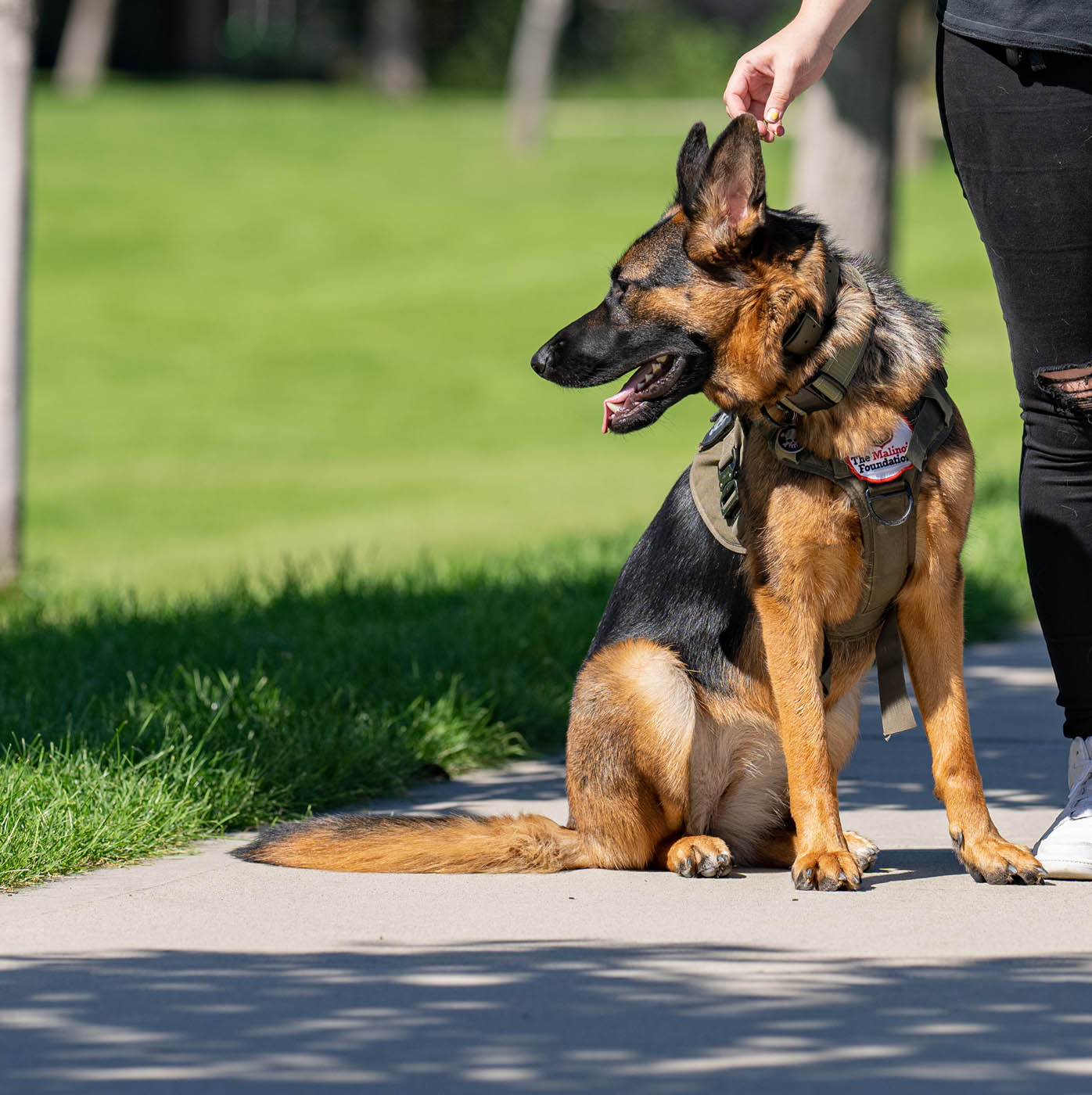Unlock Your Pet dog's Potential: Proven Dog Training Techniques for Success
Efficient pet dog training is a nuanced process that hinges on recognizing canine habits and using scientifically backed approaches. By including favorable reinforcement, developing clear commands, and focusing on socializing, dog proprietors can cultivate an efficient partnership with their animals.
Comprehending Dog Behavior
Comprehending pet dog habits is vital for reliable training and cultivating a positive partnership between dogs and their proprietors. A comprehensive understanding of canine body language, articulations, and social communications is critical for acknowledging their feelings and demands. Dogs connect mostly via non-verbal hints; for instance, a wagging tail may indicate excitement, while pinned ears can indicate anxiety or submission.

In addition, environmental variables play a significant role fit a canine's behavior. Changes in routine, new environments, or the presence of unfamiliar individuals can bring about stress or anxiety in pets. Recognizing these triggers enables owners to mitigate unfavorable responses and establish suitable training strategies.
Ultimately, a deep understanding of pet dog habits lays the foundation for effective training approaches, enhancing both habits and the total bond in between the pet and its proprietor. dog training charlotte nc. This knowledge is essential for fostering a well-adjusted, pleased canine companion
Favorable Support Strategies
Efficient training depends greatly on favorable reinforcement techniques, which have actually been shown to produce considerable lead to forming desired behaviors in canines. This strategy involves compensating a pet dog for showing specific habits, thus raising the likelihood that these behaviors will be repeated. Benefits can take various forms, consisting of deals with, appreciation, toys, or playtime, depending on what encourages the individual pet dog.

It is vital to slowly terminate incentives as the dog learns the habits, transitioning to recurring support. This technique keeps the habits over time while preventing dependency on consistent rewards. By concentrating on favorable support, fitness instructors can grow a trusting connection with their pets, advertising a participating and healthy and balanced training atmosphere that improves total obedience and performance.
Developing Constant Commands
A basic aspect of effective pet dog training is the facility of regular commands. Uniformity in commands is vital for efficient interaction in between the dog and the fitness instructor. When commands are uniform, pet dogs learn to associate details words with desired behaviors, which accelerates the training procedure and enhances understanding.
To develop constant commands, it is vital that all family participants utilize the same terms and gestures. For example, if someone utilizes obedience class for dogs near me "sit" while another says "rest down," it can develop confusion for the canine. Select clear, unique words for commands and make sure everyone associated with the canine's training complies with these choices.
Reinforce commands via regular practice, making certain that the dog obtains adequate chances to react appropriately. When a pet effectively complies with a command, immediate positive support ought to follow.
Finally, be patient. Establishing constant commands takes some time and initiative. With dedication and clarity, you will certainly aid your pet create a strong understanding of expectations, ultimately resulting in a mannerly companion.
Socialization and Direct Exposure
Socializing a canine is crucial for cultivating a positive and well-adjusted buddy. This process includes revealing your dog to a range of environments, individuals, and other animals to create their social abilities and adaptability. Early socializing, preferably in between the ages of 3 to fourteen weeks, is crucial, as it lays the groundwork for a pet's future habits.
During socializing, objective to give positive experiences in different settings, such as parks, active streets, and homes with various other family pets. Introduce your pet dog to various stimulations, including noises, sights, and scents, guaranteeing that each encounter is rewarding. This direct exposure helps minimize concern and anxiety, leading the way for a more durable pet.
Engaging in regulated group play sessions with various other pets can also boost social abilities, instructing your pet proper interactions and borders. Prioritizing socialization will significantly add to your pet's overall happiness and habits throughout their life.
Overcoming Common Educating Challenges

Pet dogs might have a hard time to concentrate in busy navigate to these guys or unknown setups. Progressively desensitize your canine to disturbances by starting training in a silent setting and gradually presenting more stimulations as they come to be skillful.
Furthermore, behavior issues like jumping or excessive barking can become irritating. Address these by instructing different habits, such as sitting calmly when greeting guests. Uniformity and persistence are vital; strengthen desired behaviors constantly and stay clear of scolding, which Home Page can lead to complication.
Last but not least, acknowledge that each dog is special, and training timelines may vary. Dressmaker your method to your pet dog's individual demands, and look for expert guidance if necessary. With willpower and the right strategies, getting rid of these obstacles can lead to a well-trained, happy canine companion.
Verdict
To conclude, opening a pet dog's potential demands a detailed method that incorporates an understanding of canine habits, the application of positive support methods, and the establishment of consistent commands. Early socializing and exposure to varied settings additionally improve a pet's versatility and confidence. By addressing common training challenges with tailored strategies and perseverance, a cooperative and unified connection in between pet dog and handler can be promoted, eventually resulting in a mannerly companion with the ability of thriving in numerous scenarios.
Reliable canine training is a nuanced procedure that pivots on understanding canine actions and using medically backed strategies.Comprehending canine actions is vital for effective training and cultivating a positive partnership between canines and their proprietors.Efficient training relies greatly on favorable reinforcement methods, which have been revealed to yield substantial outcomes in forming preferred behaviors in dogs. When commands are uniform, canines learn to link certain words with desired actions, which accelerates the training procedure and improves understanding.
In final thought, unlocking a pet dog's potential necessitates a thorough strategy that integrates an understanding of canine actions, the application of positive reinforcement strategies, and the facility of constant commands.